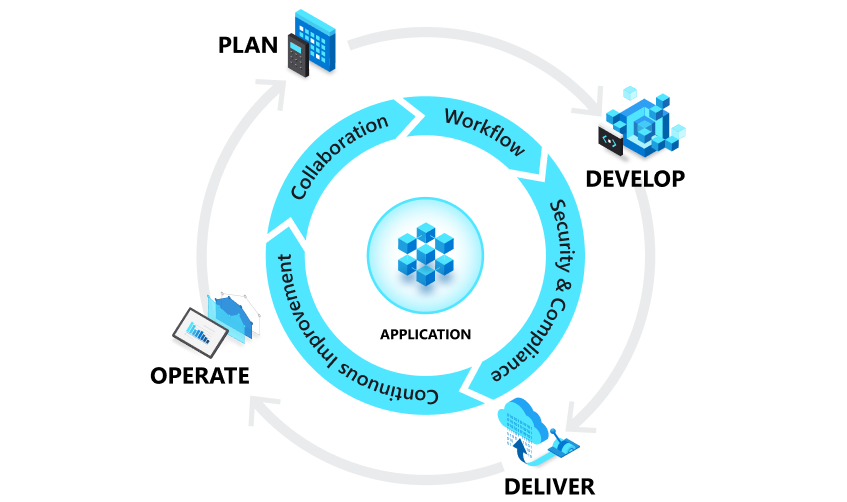DevOps Lifecycle
The DevOps Lifecycle consists of several continuous stages that ensure efficient software development, deployment, and maintenance. It promotes collaboration, automation, and monitoring to optimize the software development lifecycle (SDLC).
DevOps follows a continuous lifecycle that integrates development and operations processes. This lifecycle consists of various stages that ensure smooth and automated software delivery, reducing manual efforts and minimizing errors.
Key Phases of the DevOps Lifecycle
- Plan: Define project requirements, set goals, and create development roadmaps.
- Develop: Write, review, and commit code using version control systems.
- Build: Compile source code, resolve dependencies, and generate deployable artifacts.
- Test: Automate testing processes to detect bugs and ensure software quality.
- Release: Prepare for deployment, validate performance, and manage approvals.
- Deploy: Automate the software release process using CI/CD pipelines.
- Operate: Manage infrastructure, monitor applications, and ensure uptime.
- Monitor: Track system performance, gather user feedback, and optimize processes.

The DevOps Lifecycle consists of multiple continuous stages.
How DevOps Lifecycle Improves Efficiency
Each phase in the DevOps lifecycle plays a crucial role in improving software delivery. Here’s how:
- Automated Workflows: Reduces manual errors and speeds up processes.
- Continuous Integration: Developers frequently merge code, ensuring stable builds.
- Continuous Testing: Automated testing detects issues early in the cycle.
- Faster Deployment: Automated pipelines enable rapid and reliable software releases.
- Real-time Monitoring: Improves system health, security, and performance.
Conclusion
The DevOps lifecycle ensures that software development is **efficient, automated, and continuous**. By adopting DevOps practices, organizations can **reduce development cycles, enhance collaboration, and improve system reliability**.
Implementing DevOps successfully requires the integration of various tools and processes across each stage of the lifecycle. Companies that follow this approach can **deliver high-quality software faster, with fewer errors and greater stability**.